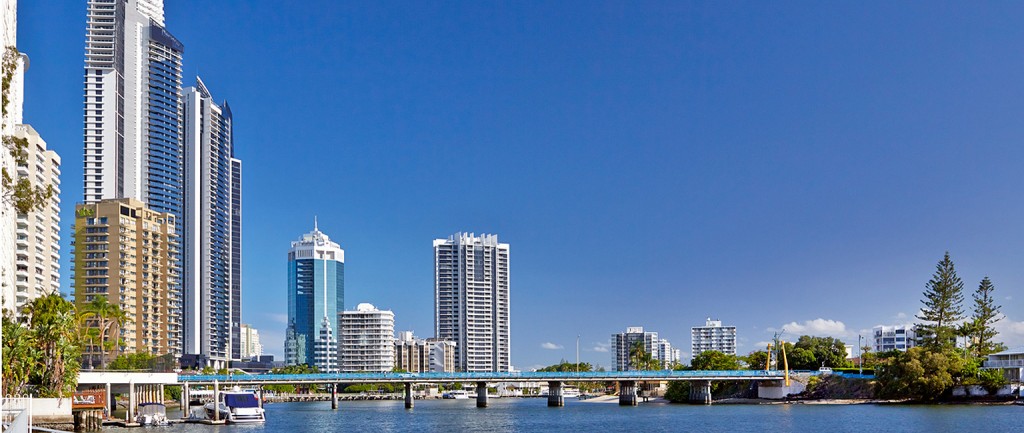Gold Coast shines as vacancies fall

The Gold Coast is proving to be south-east Queensland’s office market hot spot, with the region experiencing a renewed sense of confidence while demand in the Brisbane CBD remains in negative territory.
According to the Property Council of Australia’s latest Office Market Report, the Gold Coast saw a drop in vacancy rates from 15.2% to 14.8% in the six months to July 2015, as a result of positive demand for the local market.
The vacancy rate in Brisbane’s CBD office market also declined for the first time in three years, after reaching a high of 15.5% in January.
But rather than being the result of an upswing in demand, the reduction to 15% in July 2015 was the result of 36,096sqm of office space being withdrawn from the market, with older office buildings being redeveloped for new uses such as hotels or student accommodation.
The Gold Coast is now outperforming the Brisbane CBD, Canberra and Perth CBD, but still sits above the national vacancy average of 10.4%
The Property Council of Australia’s Queensland executive director, Chris Mountford, says: “While the headline figure (for Brisbane) has softened slightly, overall demand for office accommodation weakened over the past six months, with -19,160sqm of total absorption recorded over the past six months.”
“The premium end of the office market experienced a slight increase in vacancy rate from 9.1% to 9.3% over the six months to July, but remains the strongest sector of the market.”
But he says the Gold Coast is well placed, as it is experiencing a wave of investment in residential and tourism related products, while construction works for the Commonwealth Games are also gathering pace.
Strong outlook: Offices front and centre as mining wanes
“The Gold Coast is now outperforming the Brisbane CBD, Canberra and Perth CBD, but still sits above the national vacancy average of 10.4%,” Mr Mountford said.

The Gold Coast has the strongest office market in south-east Queensland
“Apart from C-grade, which increased from 11.6% to 13.4%, all other segments f the Gold Coast’s commercial market experienced a decreased in vacancy over the past six months.”
CBRE associate director of office services, Nick Selbie, says vacancies have continued to gradually decrease on the Gold Coast through a combination of limited new supply and returning business confidence.
“Although enquiry is only steady at best, active parties are increasingly transacting and doing so across most size ranges up to 1,500 square metres. However, 100–250 square metres remains the dominant market sector,” Selbie says.
We believe a lot of the recent activity can be attributed to incredibly strong financial offerings from landlords, along with a once-in-a-cycle opportunity to upgrade a company’s business accommodation with negligible rental increases
“Again, with no new major supply additions on the horizon a continued natural decrease in vacancy is forecast for the short to medium term with rents and incentives to remain steady for this period.”
Industry commentators say it is not all doom and gloom for the Brisbane CBD market, with tenants moving to secure three to five-year lease agreements to take advantage of the current favourable conditions.
Fighting back: Queensland industrial market weathering resources storm
Knight Frank head of office leasing for Queensland, David Howson, says many tenants are locking in substantial savings on new deals.
“We believe a lot of the recent activity can be attributed to incredibly strong financial offerings from landlords, along with a once-in-a-cycle opportunity to upgrade a company’s business accommodation with negligible rental increases,” he says.

Brisbane’s CBD is being outperformed by the Gold Coast market
JLL head of office leasing in Queensland, Adam Barrett, agrees that rents within the Brisbane CBD market remain under downward pressure and that the trend will likely continue over the next six to 12 months.
“The market’s road to a stable, balanced vacancy will be reliant on a significant amount of secondary stock being withdrawn between now and 2017,” Mr Barrett says.
“While secondary market rents continue to soften, redevelopment or change of use – hotel, residential or student accommodation – will become a more feasible outcome.
“We estimate that over 190,000sqm of space could be withdrawn over the next five-year period – 9% of the total market.”







